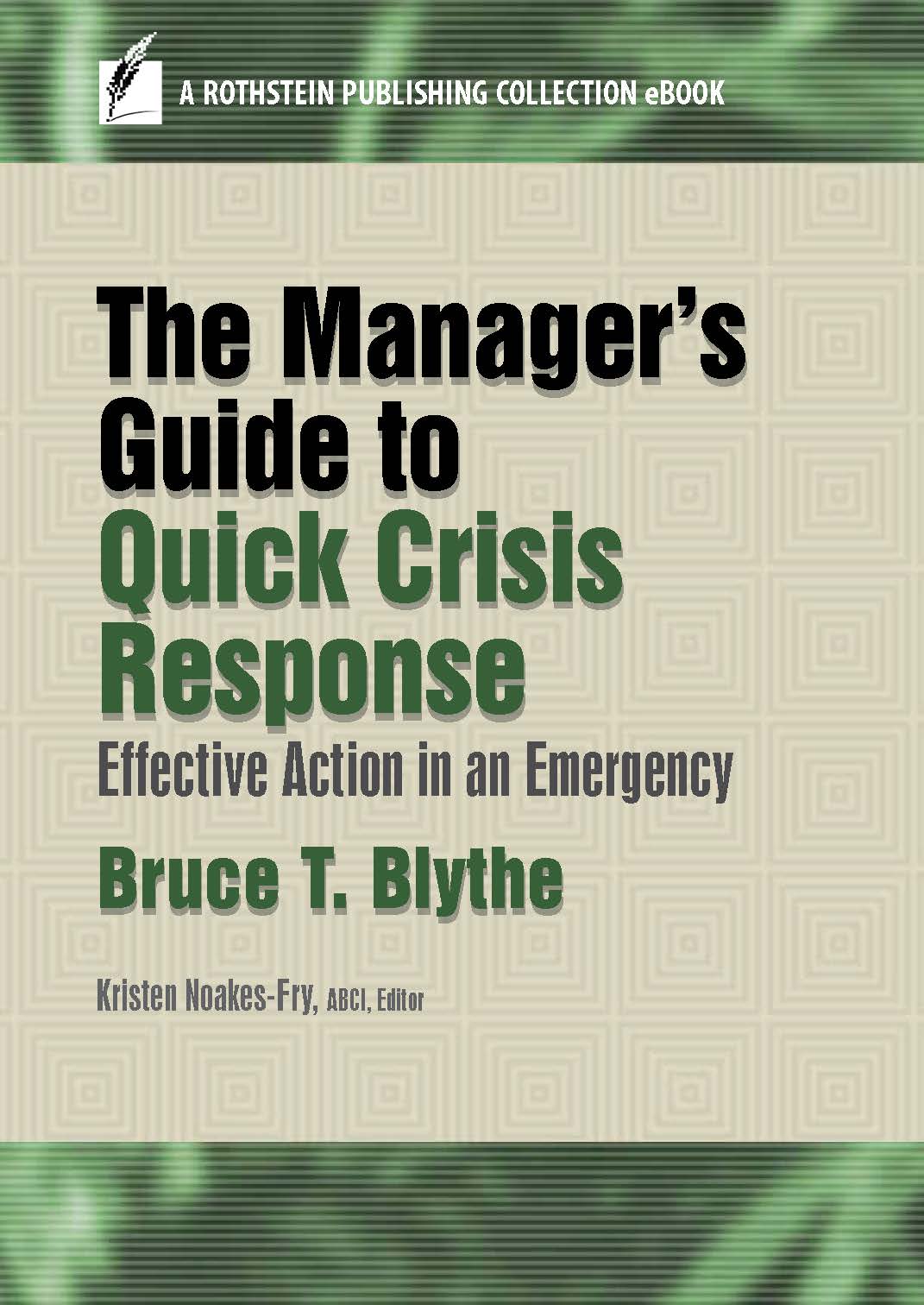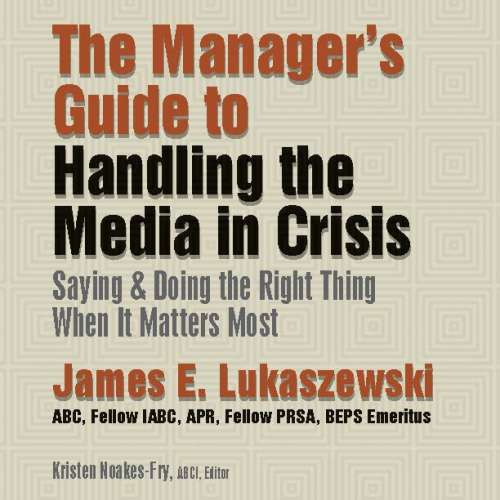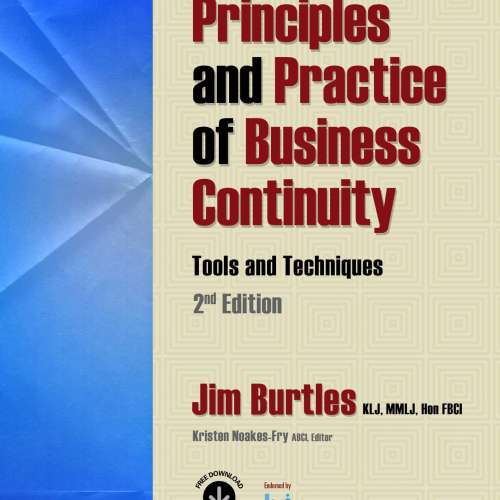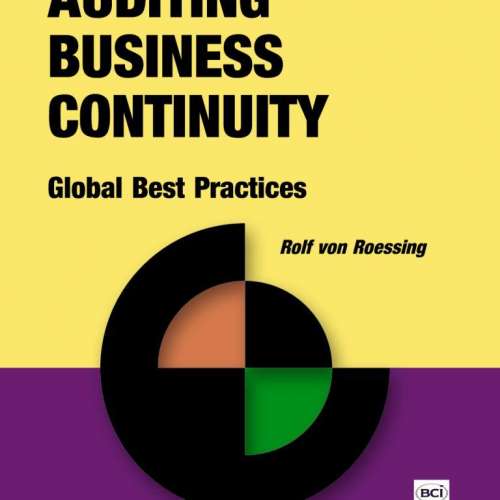Description
Learn time-tested crisis response skills to act effectively when facing threats and chaos from Bruce Blythe in Manager’s Guide to Quick Response in a Crisis.
Blythe uses real-world case studies, examples, and checklists to help you be the top-notch leader your crisis response requires.
“Hope for the best and prepare for the worst” sums up Blythe’s crisis response philosophy. This book is the essence of the basic practical counseling that he would give if he were sitting next to you at your desk. To help you figure out what to do next, he offers real-world examples of what has worked – and not worked – in his 30+ years of experience with companies just like yours.
With Blythe’s advice, you can act fast to:
- Find out the accurate facts you need to strategize and implement your crisis response.
- Compile a checklist of immediate action items.
- Create a crisis command center (CCC).
- Select the best people for your crisis response action team and determine action steps.
- Understand how to make good decisions in a crisis or emergency.
- Handle the human side of a traumatic incident.
- Set priorities in multiple timeframes.
- Establish a “new normal” as everyone phases back into productive work after the incident.
To help you take the actions that will make a difference, the book includes:
- Practical forms, checklists, cases studies, and real-life examples.
- “Quick Use Response Guide” at the end of each chapter – all four can form a handy pocket guide.
It’s one of those things you never forget – the precise moment in time when you learned some dreadful piece of news – like the death of a loved one, the assassination of a political figure, or a fatal accident where you live or work. You probably remember the period during that incident quite vividly.
Time may have slowed eerily. Thoughts and movements thickened. You felt dread and fear – a nauseating feeling that grips you and won’t let go. Even when the context is professional, the reaction is personal. As a manager confronted with a fire that’s consumed your workplace and threatened your staff, the sickening sensations are the same as those experienced by someone who learns a personal tragedy has occurred. As a leader, you have two options. Your crisis leadership can help turn chaos into ultimate order. Or the chaos can compound, spinning irretrievably out of control.
2016, 117 pages. ISBN 978-1-944480-23-3 (PDF), ISBN 978-1-944480-22-6 (EPUB)
About the Author
About the Author
Bruce T. Blythe
Bruce Blythe is an internationally acclaimed crisis management expert. He is the owner and Executive Chairman of R³ Continuum that provides employers with integrated crisis readiness, crisis response, and employee return-to-work services. They have assisted hundreds of companies worldwide with crisis, workplace violence, and business continuity planning, training and exercising. They also provide consultations worldwide for defusing serious disputes, hostilities and workplace violence threats. On average, they respond onsite to 1300 international workplace crises of all sorts per month. Finally, they work with insurers and large employers in accelerating employee return-to-work for workers comp, disability, and non-occupational injury claims throughout North America and Australia.
Mr. Blythe has been personally involved in crises such as the 1993 World Trade Center bombing and 9/11 terrorism, mass murders at the U.S. Postal Service, the Oklahoma City and Boston Marathon bombings, commercial air crashes, rescue of kidnap and ransom hostages in Columbia and Ecuador, hurricanes, earthquakes, fires, floods, and reputational crises. He serves as a consultant to numerous Fortune executives and managers in Strategic Crisis Leadership preparedness and response.
Widely regarded as a thought leader in the crisis management and business continuity industries, he is the author of Blindsided: A Manager’s Guide to Crisis Leadership. He has served in the Military Police for the U.S. Marine Corps. He’s a certified clinical psychologist and has been a consultant to the FBI on workplace violence and terrorism.
Blythe has appeared on NBC’s Today Show, CNN, ABC’s 20/20, CBS’s 48 Hours, CNBC, NPR and others. Fast Company Magazine published a cover-story article about Blythe’s companies responding onsite to 204 companies in NYC, all within three weeks following 9/11. He provides commentary in The Wall Street Journal, Newsweek, Business Week, Smart Money, New Yorker, Fortune Magazine, and USA Today. He serves as a keynote presenter to multiple national and international conferences per year.
Blythe’s past and present affiliations:
- ASIS International’s Crisis Management and Business Continuity Council
- U.S. Department of State’s Overseas Security Advisory Council
- Disaster Recovery Institute’s Educational Advisory Council
- The Conference Board (Chairman of the Corporate Security, Business Continuity and Crisis Management Conference)
- Association of Traumatic Stress Specialists, six years on the Board of Directors
- NFPA 1600 Technical Committee’s Task Group on Crisis Management and Business Continuity
- The International Society for Traumatic Stress Studies
- Association of Threat Assessment Professionals
Blythe’s areas of expertise:
- Strategic Crisis Leadership (for Board Members, Senior Executives and Crisis Managers)
- Crisis Preparedness and Response
- Workplace Violence Preparedness and Defusing Threatening Individuals
- Hostility Management and Dispute Resolution
- Human Side of Crisis and Post-Incident Return to Work
- Crisis Decision-Making
Contents
Cover
Title Page
Copyright
Chapter 1: Taking Decisive Action
1.1 Three Ways You Could Get the News
1.2 Breaking It Down
1.3 You’ll Need to Act Fast
1.4 The Hunt for Information: Four Questions
1.5 Keep the Big Picture in Mind
1.6 Crisis Decision-Making
1.7 Use a Model to Optimize Decision-Making
1.7.1 Scan
1.7.2 Identify
1.7.3 Predict
1.7.4 Decide
1.7.5 Execute
1.8 A Manager in Crisis
1.8.1 Damage Control
1.8.2 Orchestrating Your Response
1.8.3 The Imperative for Rapid Response
1.9 Four Categories of Concern
1.9.1 People
1.9.2 Business Disruption
1.9.3 Reputation
1.9.4 Finances
1.10 Other Priority-Setting Strategies
1.11 Checklist of Immediate Action Items
Quick Use Response Guide Chapter 1: Taking Decisive Action
Chapter 2: Crisis Containment
2.1 We’re Now Entering the Crisis Containment Phase
2.2 The Six Phases of Managing a Crisis
2.2.1 Phase 1: Notification and Activation
Figure 2-1. Three-tiered Crisis Management Organization
2.2.2 Phase 2: Fact Finding
2.2.3 Phase 3: Decision-Making
2.2.4 Phase 4: Prioritizing
Table 2-1. Posted Emerging Fact Pattern
Table 2-2. Posted Priorities
Table 2-3. Posted Pending Items
2.2.5 Phase 5: Implementation
2.2.6 Phase 6: Purposeful De-escalation
2.3 Crisis Command Center (CCC)
2.3.1 Location
2.3.2 The Ideal Room
2.3.3 Other Possibilities
2.3.4 Special Roles
2.3.5 Additional Command Center Tips
2.4 Crisis Action Team (CAT) Leader
2.5 Initial CAT Meeting
Quick Use Response Guide Chapter 2: Crisis Containment
Chapter 3: Order Out of Chaos
3.1 Understanding the Crisis
3.2 Crisis Decision-Making
3.3 Common Crisis Management Problems – ACE
3.3.1 Authority
3.3.2 Communications
3.3.3 Expectations
3.4 Psychological First Aid
3.5 Rallying the Troops
3.5.1 Who Is Hurting?
3.5.2 Prepare for Family Members
3.5.3 Tell What They Know
3.6 Employee De-escalation Meetings
3.6.1 De-escalation Meeting Content
3.7 Taking Stock
3.8 A Tale of Two Traders
3.8.1 Background
3.8.2 All-Tech Response
3.8.3 Momentum Response
3.9 Day One CMT Checklist
3.10 Ten Questions to Assess Your Decisions and Actions
Quick Use Response Guide Chapter 3: Order Out of Chaos
Chapter 4: Establishing the New Normal
4.1 It’s Back to Work We Go
4.2 Your Window of Opportunity
4.3 The First Day Back
4.3.1 The Management Briefing
4.3.2 Ways of Listening
4.4 A Program for Recovery: Psychological First Aid
4.4.1 Traditional Psychological Debriefings Not Recommended
4.4.2 Positive Coping Strategies Needed
4.4.3 Individual Assessment and Counseling
4.4.4 Early Intervention
4.5 Phasing Back Into Productive Work
4.5.1 Supervisory Monitoring
4.5.2 Purposeful Disengagement
4.5.3 Anniversary Effect
4.6 Operational Debriefing for Lessons-Learned
Quick Use Response Guide Chapter 4: Establishing the New Normal
References
About the Author
Credits
More from Publisher
Excerpt from Chapter 1: Taking Decisive Action
1.8.3 The Imperative for Rapid Response
The period immediately following serious traumatic injury is known as the “golden hour.” It’s been proven that patients have a far greater chance of successful recovery from their injuries if medical care is delivered within one hour.
Similarly, a well-planned, frequently reviewed crisis response plan can enable you to respond at top speed, and possibly save people’s lives – and the viability of your organization, too.
Delegate. The only way to manage rapidly emerging consequences following crisis events is to utilize the resources that are available to you. Your job will be to gather information, assess the situation, and establish priorities quickly – and delegate. Be ready to give directives to remote individuals making the notification, onsite managers, available employees, and outside resources. As a crisis leader, your job is to look out the windshield and steer, not to fix the motor with your head under the hood.
Keep track. Maintain the ability to document your thoughts at all times during crisis response. Make a habit of writing down or entering information, as it becomes available, handwritten or into your personal electronic device (PED). Track the times of each entry. Log the names of people you talk with, and the content of the discussions. Highlight priority decisions and actions with the approximate time they are to be completed. Keep track of pending items that require additional information or will be implemented at a later time. Note the ideas and recommendations that come to mind, for later discussions with appropriate others, or as a reminder to yourself for execution. Of course, it will not be possible to note every action or thought you have in the chaos of an immediate response to a real-life experience like our imagined shooting incident. But as soon as you can, organize yourself through this invaluable record of the emerging fact pattern, decisions and actions, and responsibilities personally assumed or assigned to others.
Continue the recordkeeping from initial notification throughout the entire event up until the disengagement period. Documenting information you receive can help you keep track of all the needed things to do and help protect you or your company if you should be legally challenged about actions you took or your timeliness in responding.
For example, imagine that the family of a victim accuses your company of delaying notification that their loved one had been injured or killed. Your notes can identify the specific times you and they were notified, which could be of critical importance in resolving the dispute. It could also provide the rationale why the notification was reasonably delayed. Without documentation of the fact pattern, it can be difficult to defend your actions later.
Three Key Questions
One way to prioritize action items in the immediate aftermath is to ask yourself these three questions:
- What needs to stop that is presently occurring?
- What needs to start that is not presently happening?
- In what ways can this situation escalate in severity?
In our shooting scenario,we needed to stop employees from roaming outside the building with a gunman on the loose and emergency services dispatched. We needed to start effective first aid and professional life support for the victims as soon as possible. And the situation could escalate if the gunman continued to shoot.





